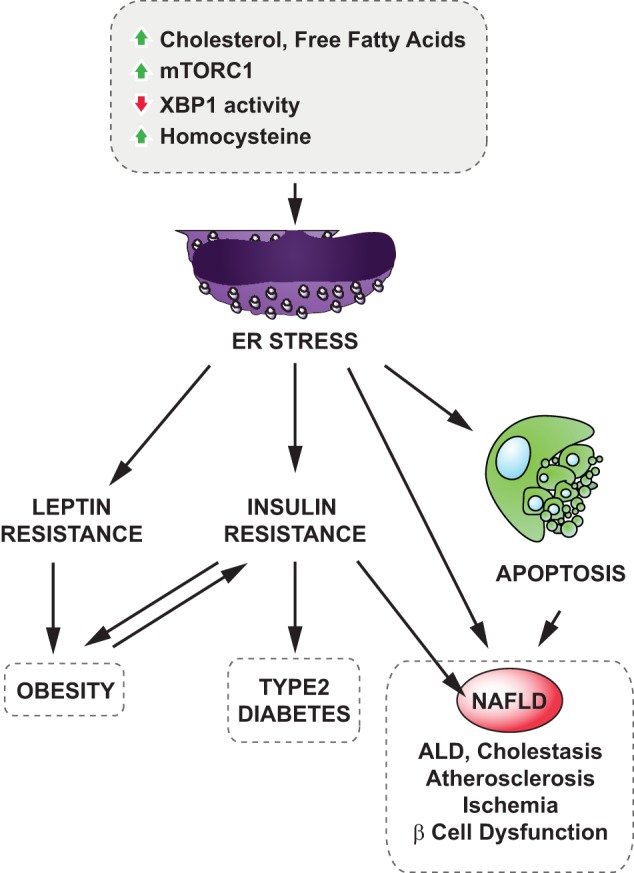FIGURE 2.

ER stress and metabolic disorders. Various stimuli such as increased loads of cholesterol or free fatty acids or chronic activation of mTORC1 activity, hyperhomocysteinemia, and decreased XBP1s activity were shown to cause ER stress under obesity conditions. ER stress leads to the development of obesity through hypothalamic leptin and insulin resistance and contributes to type 2 diabetes via inducing peripheral insulin resistance and increasing hepatic gluconeogenesis. Furthermore, ER stress has been suggested to be involved in various pathologies of metabolic liver diseases (NAFLD, ALD, and cholestasis) and cardiovascular diseases (atherosclerosis and ischemia).
